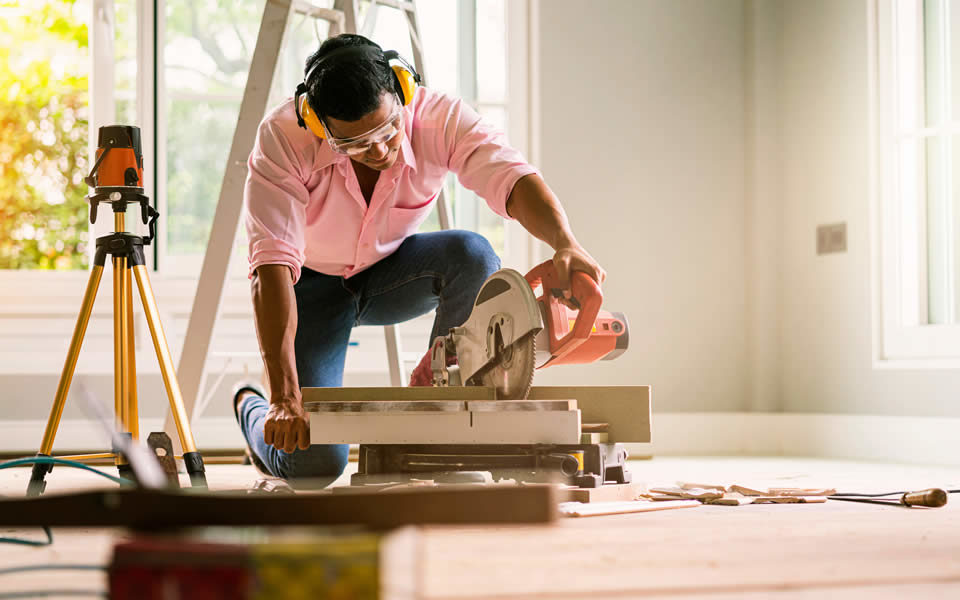Selling a Personal Residence: What Costs Qualify as Home Improvements?
By Karl Neulinger, Director, Tax & Business Services
During tax season, we are frequently asked, “What home improvements are tax deductible?” Selling a personal residence can be complex in itself. Factor in the tax implications and things become even more complicated. This Property Matters article will explain which improvement costs qualify and in addition offer tips for safeguarding yourself in the event of a Federal or State examination.
>BASICS OF TAX DEDUCTIBLE HOME IMPROVEMENTS
On your tax return, the deductibility of the improvement is kind of a good news/bad news scenario. Yes, a qualified home improvement is ultimately tax deductible, but not in the year the expense is incurred. These costs must be capitalized and will add to the cost basis of your home, which reduces your gain on the sale of your home.
When you sell your home, you can exclude $250,000 of the gain from taxation ($500,000 if filing a joint return).
Basis in the home is the sum of its original purchase price, certain non-deductible closing costs (title fees, attorney fees, etc.), and improvements made to the home over the years the house was owned.
As a rule of thumb, an improvement is anything attached to the house that would be left behind in a sale. The IRS and the tax code specify that an improvement is an item that adds to the value of your home, prolongs its useful life or adapts it to new uses. At first blush, it seems simple, but there’s an exception for every rule in the tax code.
COSTS GENERALLY EXCLUDED AS HOME IMPROVEMENTS
The items below provide a benchmark for costs that are generally excluded from tax deductions; however, there are certain circumstances in which they can be included. So, it’s extremely important to discuss your particular situation with your tax professional.
- Maintenance and repair costs: While costs like related to things such as painting, fixing leaks and cracks and replacing broken hardware are necessary for home upkeep, IRS Pub. 523 dictates these types of maintenance and repairs will not prolong its life, increase its value or adapt it to a new use. However, if you were repairing a window to better insulate your home, or as part of a larger project of replacing all the windows in your home, those expenditures would count as an improvement. Likewise, typical repair work can be capitalized if incurred due to a fire or flood in your home.
- Improvements that are no longer part of your home: The costs of changes such as replacing your wall-to-wall carpeting are also not tax deductible.
- Costs for improvements with a life expectancy of 1 year or less when placed into service.
COSTS GENERALLY INCLUDED AS HOME IMPROVEMENTS
So now that we’ve excluded items, what is a list of home improvements that are tax deductible? While not all-inclusive, the following are examples of items that generally qualify as home improvements that can be capitalized:
- Architect fees
- Bedroom additions
- Bathroom additions
- Garage additions
- New porch
- Deck/patio installation
- Landscaping (non maintenance)
- New driveway/walkway
- Fence installation
- Swimming pool installation
- Retaining wall
- New storm windows/doors
- New roof
- New siding
- New insulation in the attic and walls
- Kitchen renovation
- Built-in appliances
- New floors
- Wall-to-wall carpeting
- Fireplace addition
- Installation of a new heating/cooling system
- New furnace
- Duct work
- Installation of a central vacuum
- New wiring
- New security system
- New lawn sprinkler system
- Septic system installation
- Connecting of septic to sewer system
- New soft water system
- Additions made for the elderly or infirm (stair lifts, handrails, etc.)
Keep invoices for the expenses in a central location. You will need them when the home is sold to shelter yourself in the event of a Federal or State examination. In some audit instances, the State can request substantiation for improvements dating back several years. Without proper documentation, amounts can be disputed and perhaps disallowed.







